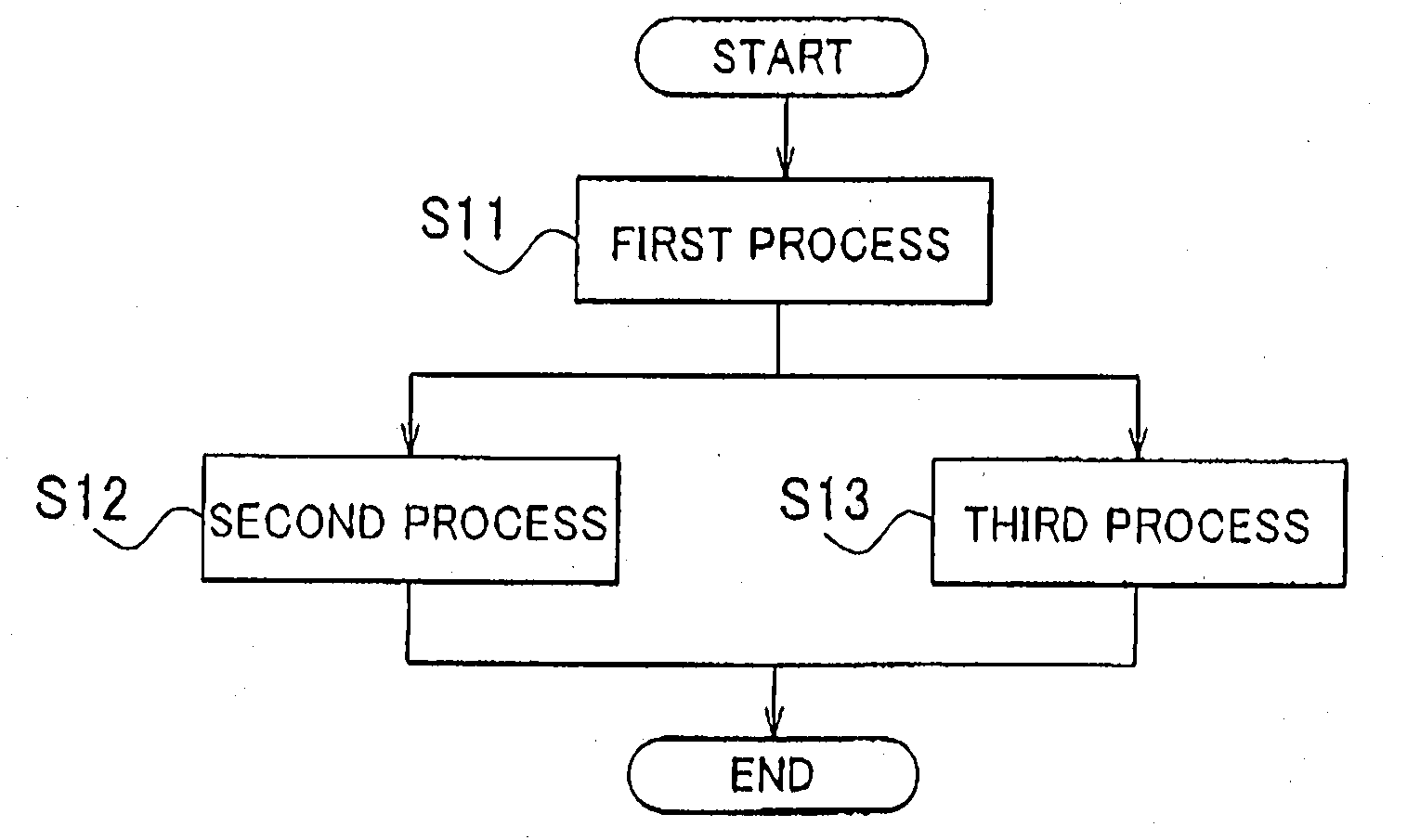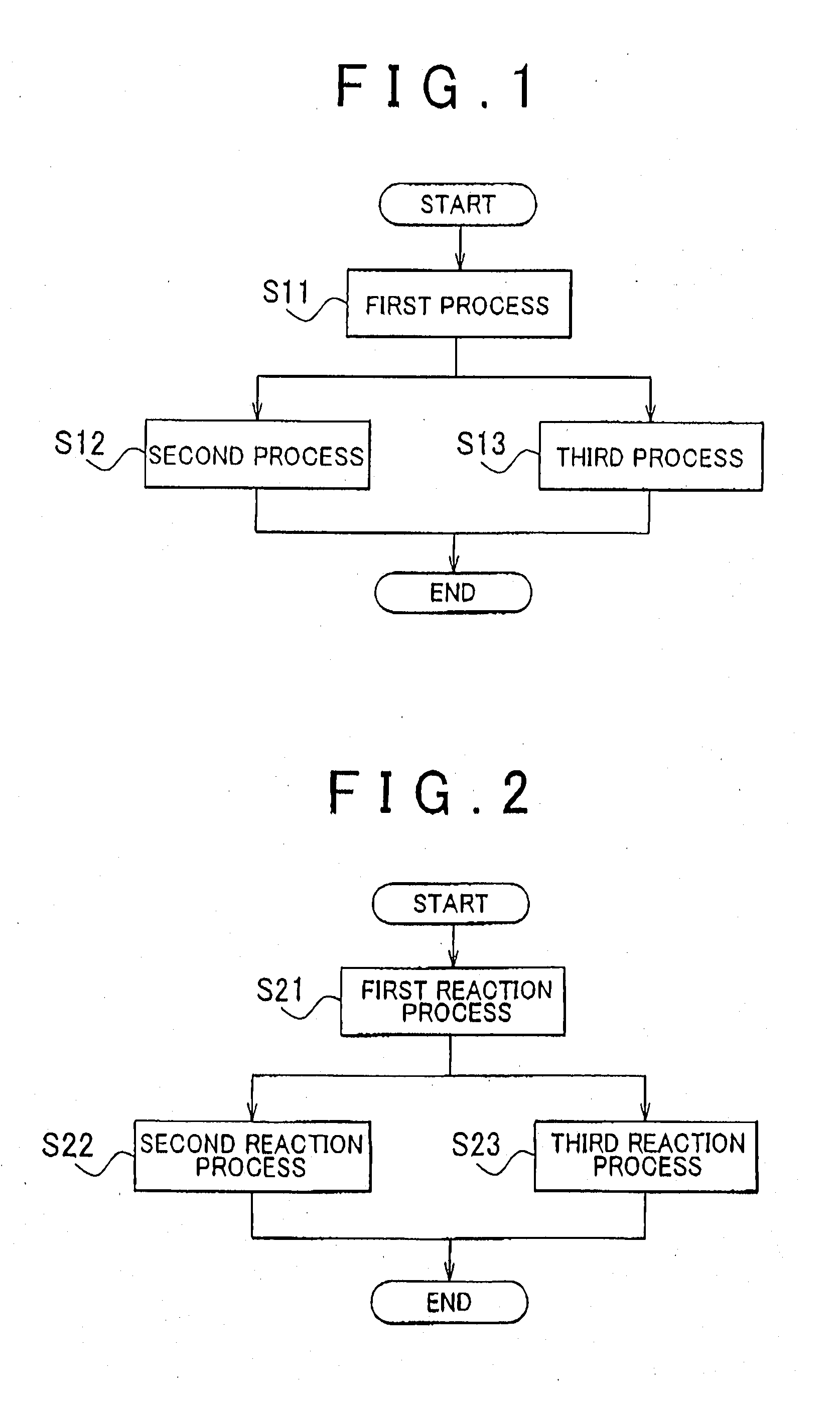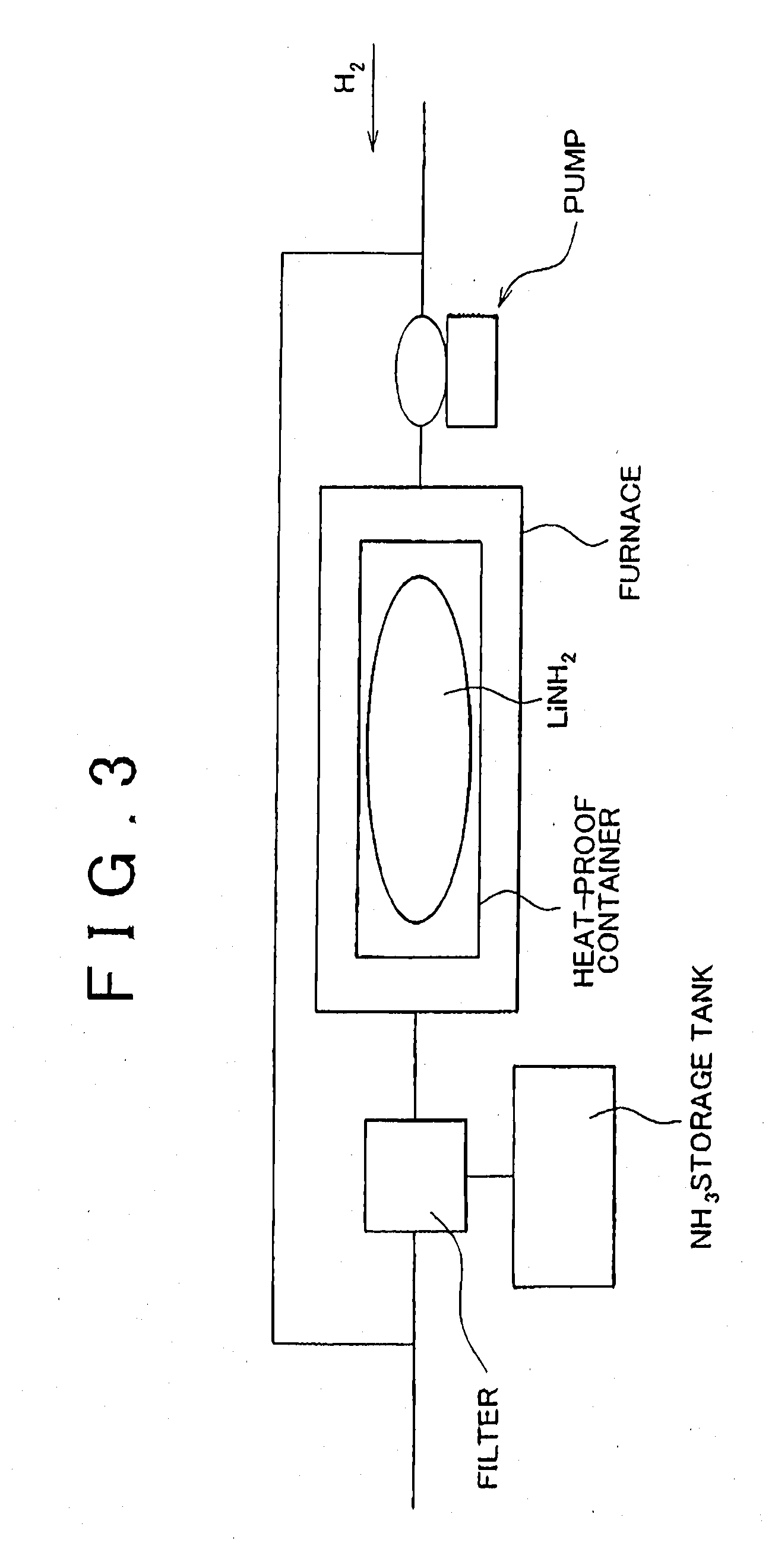Hydrogen production method, hydrogen production system, and fuel cell system
a technology of hydrogen production system and fuel cell, which is applied in the direction of liquid-gas reaction process, magnesium compound, lithium compound, etc., can solve the problems of large amount of energy consumed, difficult to provide a compact system, and inefficient efficiency
- Summary
- Abstract
- Description
- Claims
- Application Information
AI Technical Summary
Benefits of technology
Problems solved by technology
Method used
Image
Examples
Embodiment Construction
[0044]The flowchart of FIG. 1 illustrates the processes of a hydrogen production method according to the first example embodiment of the invention (this method will hereinafter be referred to as “first hydrogen production method” where necessary). Referring to FIG. 1, the first hydrogen production methods includes the first process (S11), the second process (S12), and the third process (S13). Hydrogen is produced through these processes S11 to S13.
[0045]In the first process S11, lithium nitride (Li3N) is reacted with water (H2O) as represented by the following reaction formula (1) indicated below.
Li3N+3H2O→NH3+3LiOH (1)
The reaction represented by this reaction formula (1) above is a heat-generating reaction that is caused by, for example, contacting solid lithium nitride (Li3N) with liquid water (H2O), and the reaction can progress at a room temperature. The ammonia (NH3) produced in the first process S11 is used in the second process S12 and the lithium hydroxide (LiOH) produced ...
PUM
 Login to View More
Login to View More Abstract
Description
Claims
Application Information
 Login to View More
Login to View More - R&D
- Intellectual Property
- Life Sciences
- Materials
- Tech Scout
- Unparalleled Data Quality
- Higher Quality Content
- 60% Fewer Hallucinations
Browse by: Latest US Patents, China's latest patents, Technical Efficacy Thesaurus, Application Domain, Technology Topic, Popular Technical Reports.
© 2025 PatSnap. All rights reserved.Legal|Privacy policy|Modern Slavery Act Transparency Statement|Sitemap|About US| Contact US: help@patsnap.com



